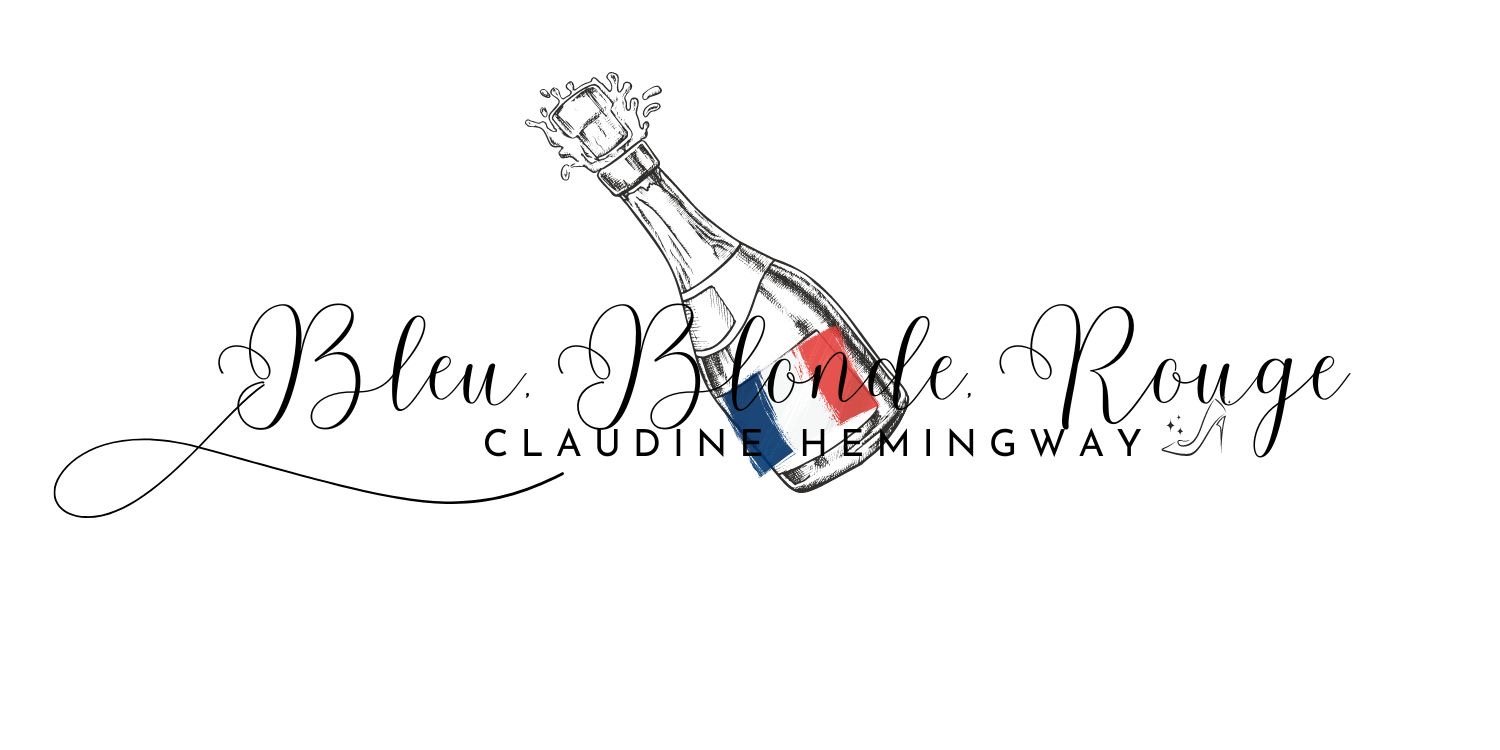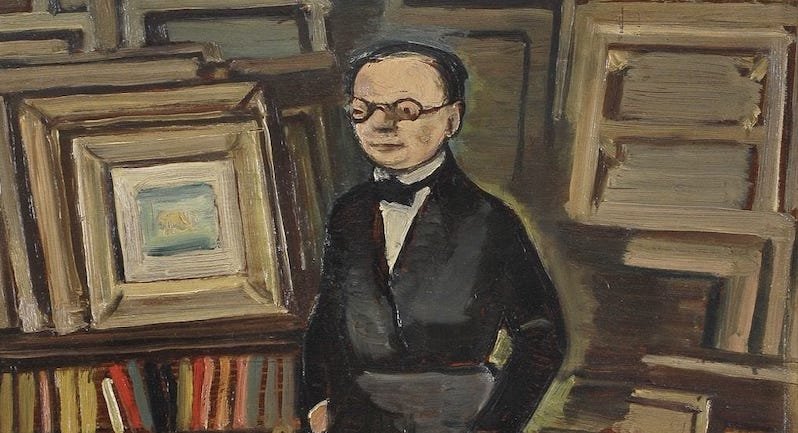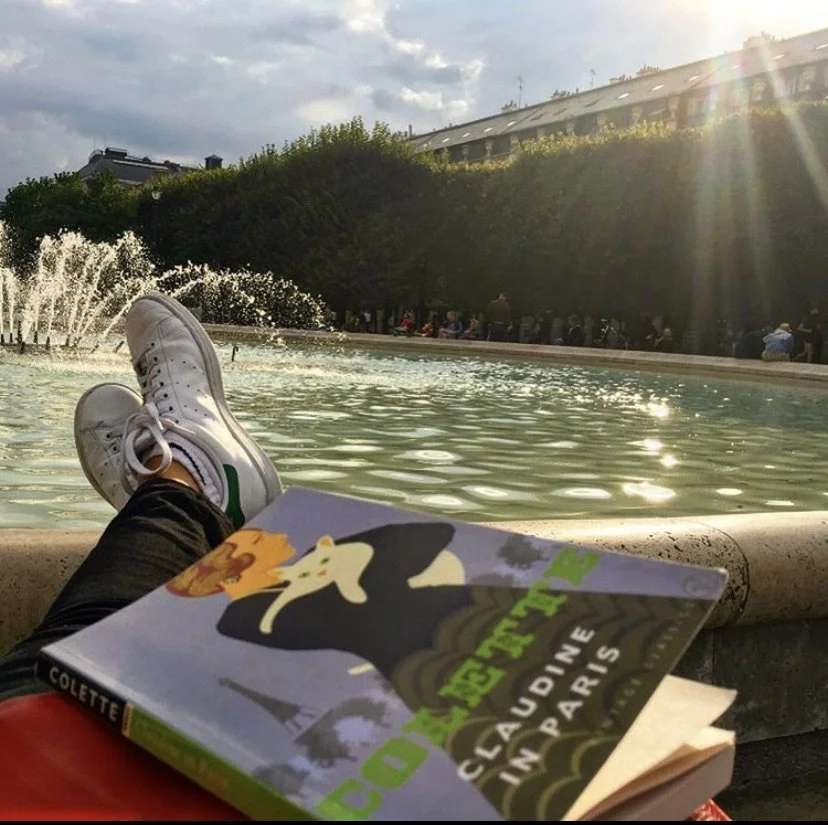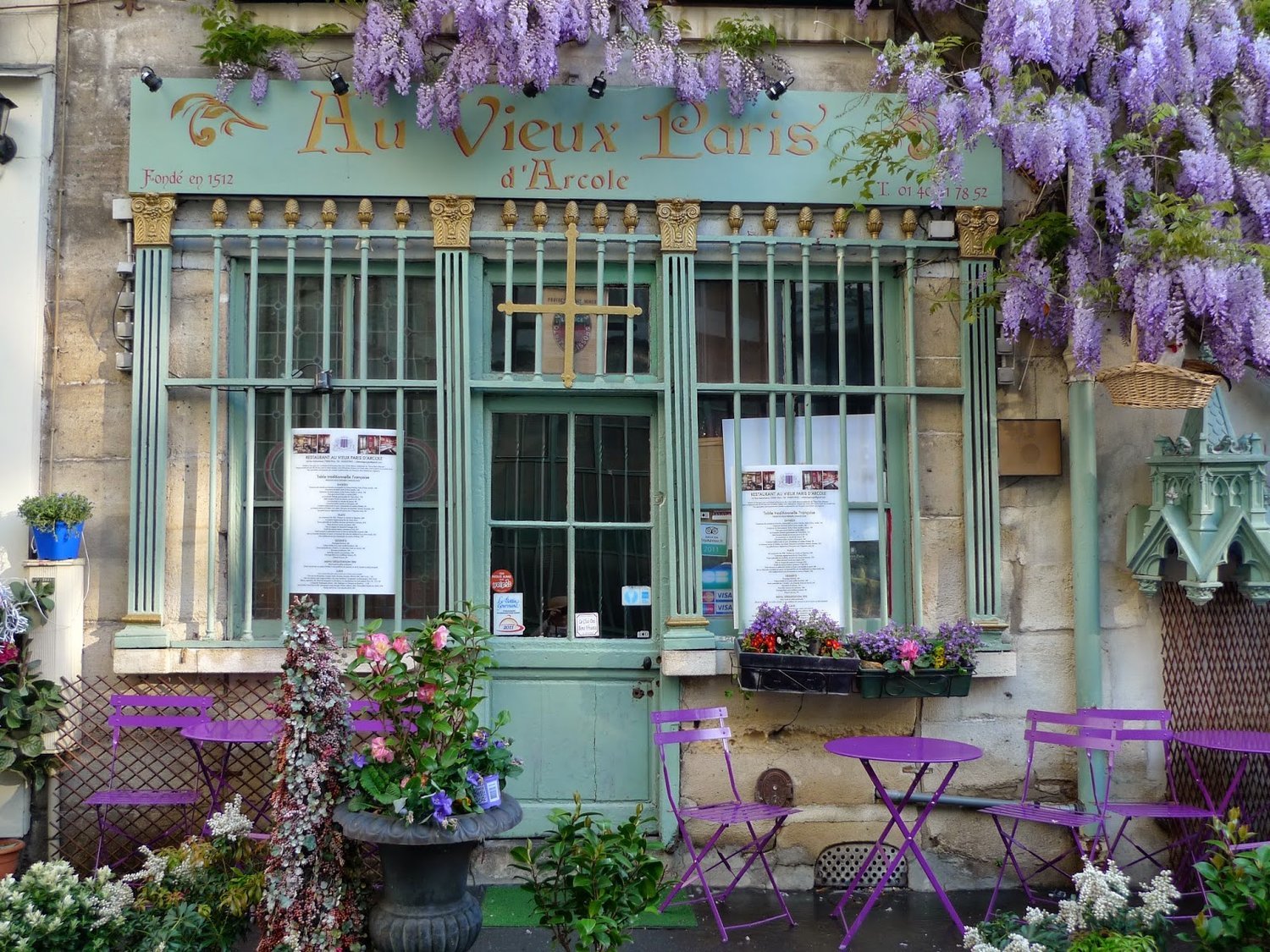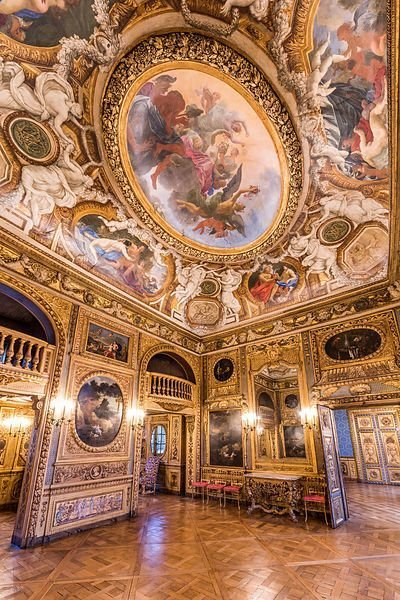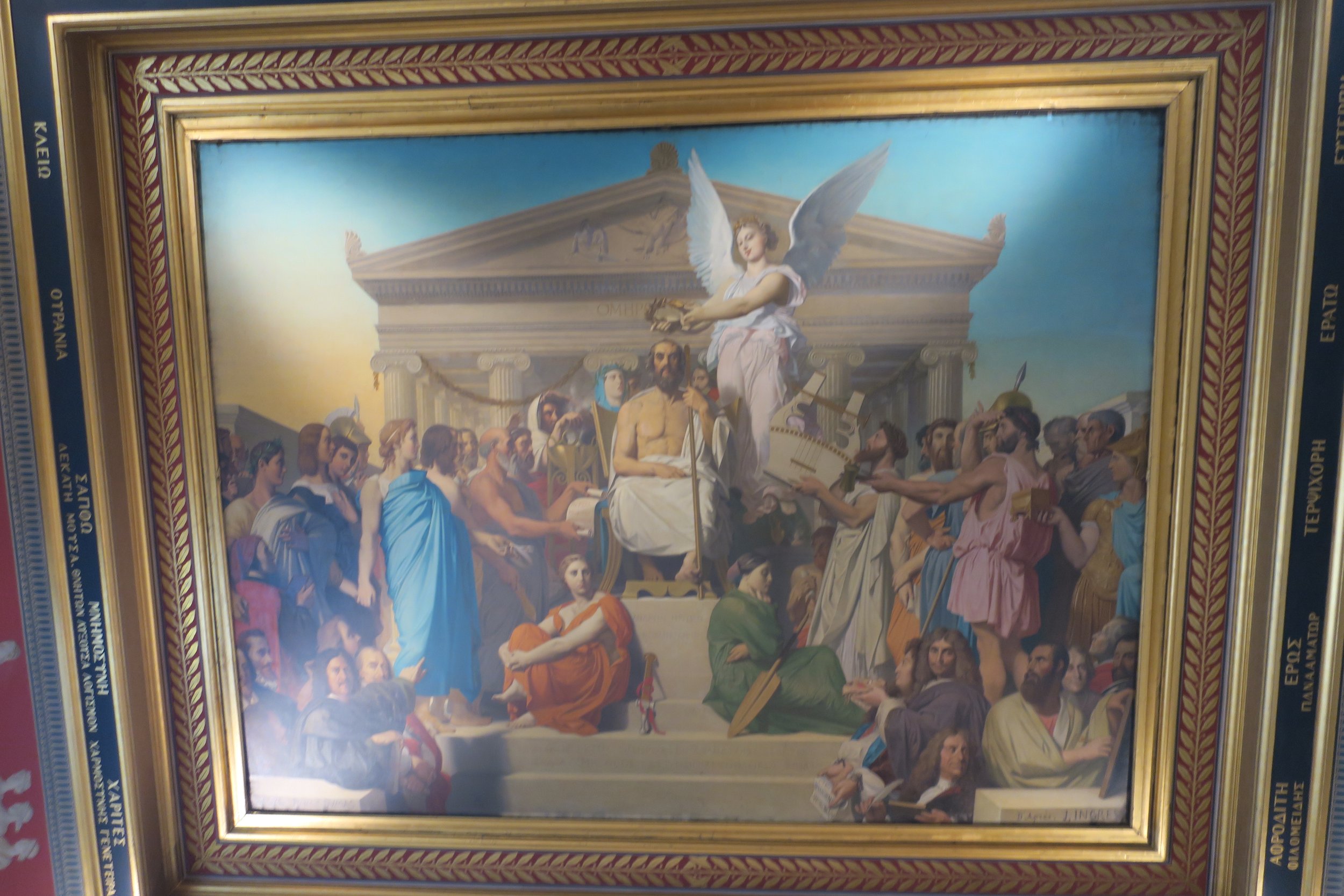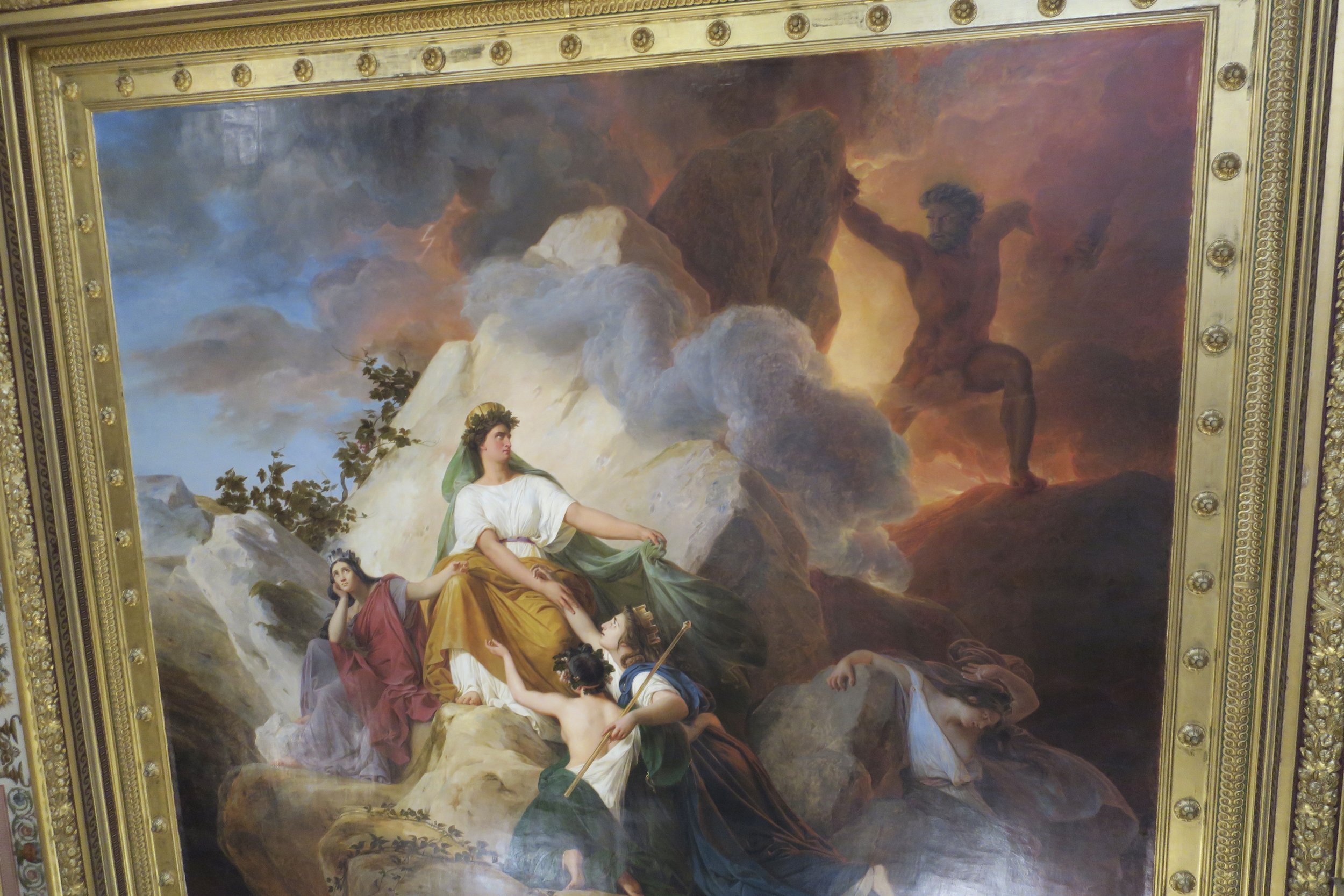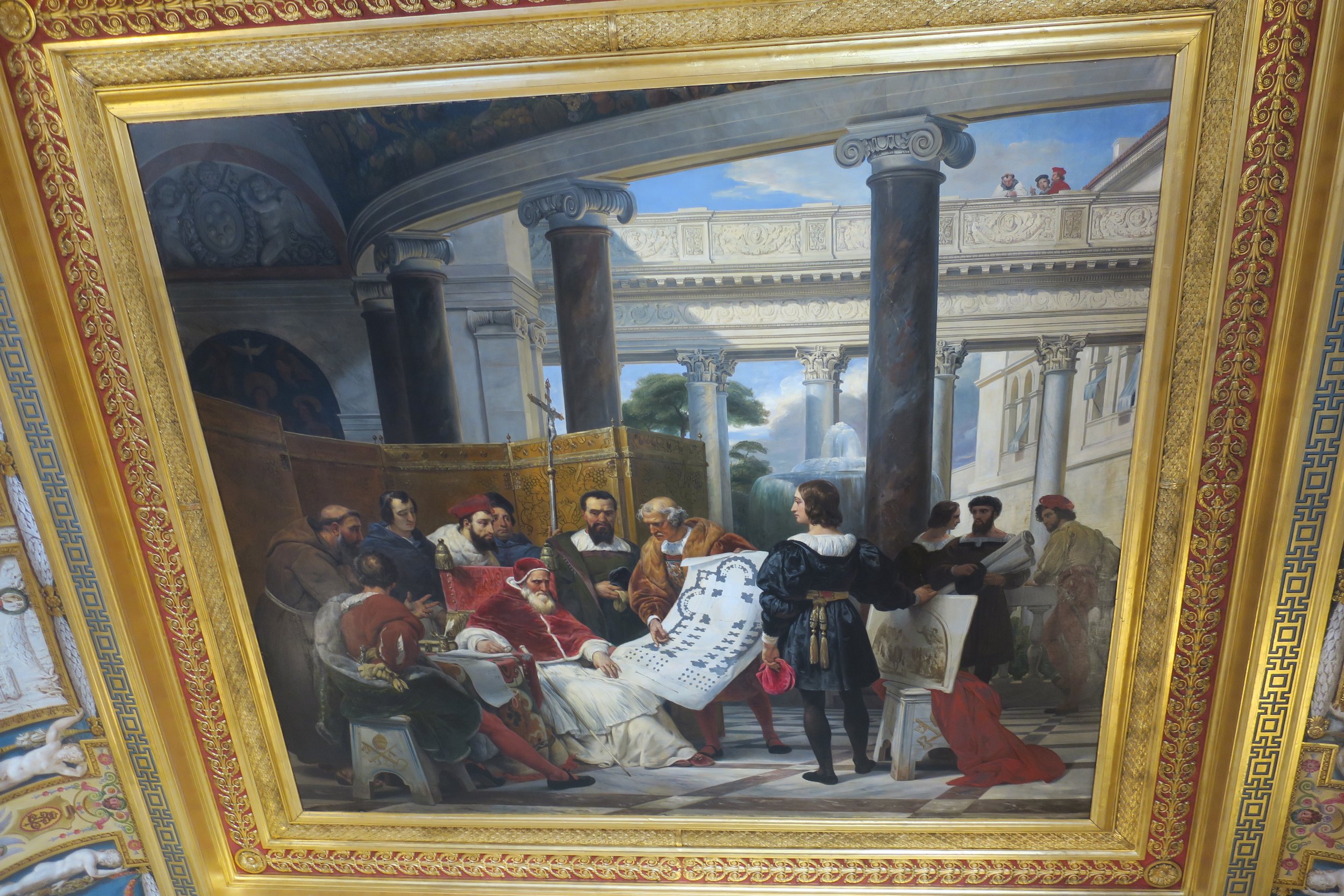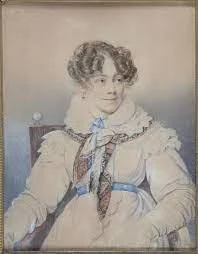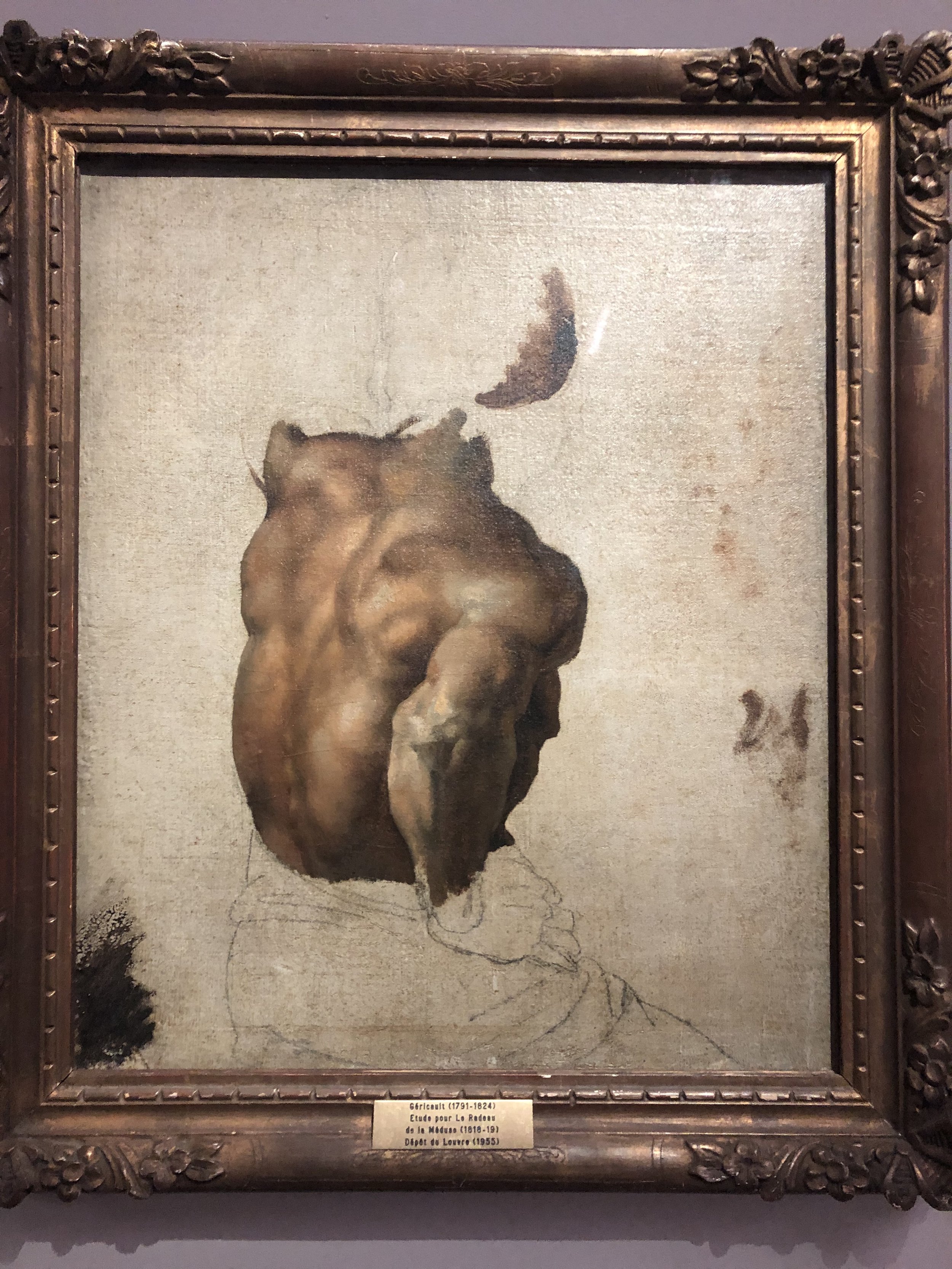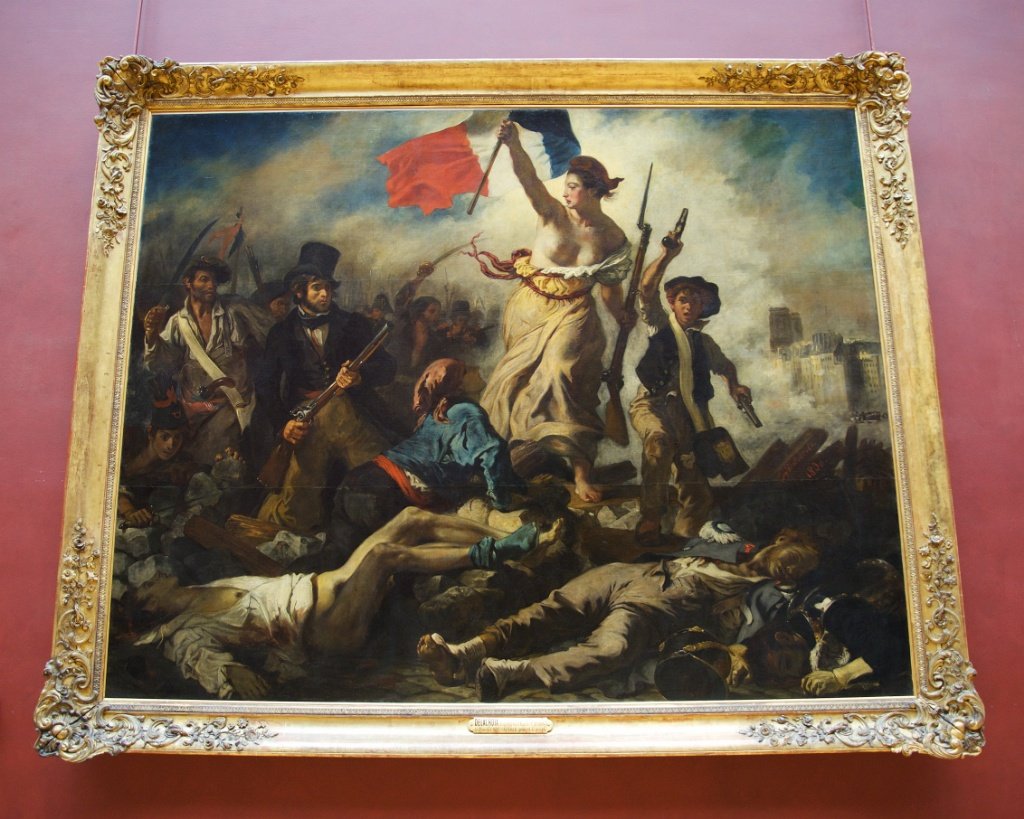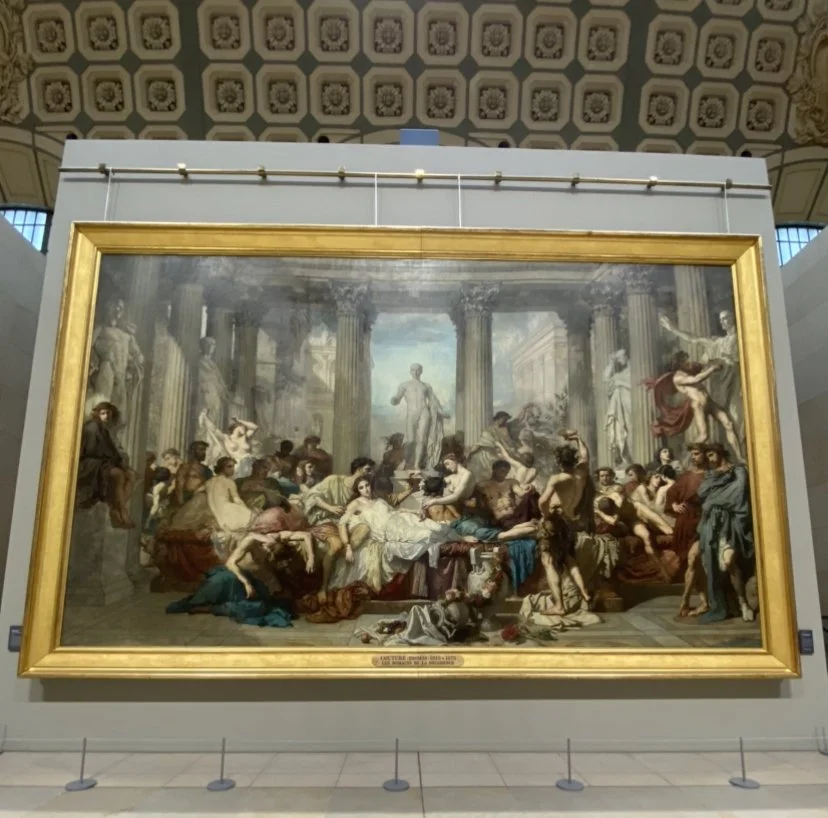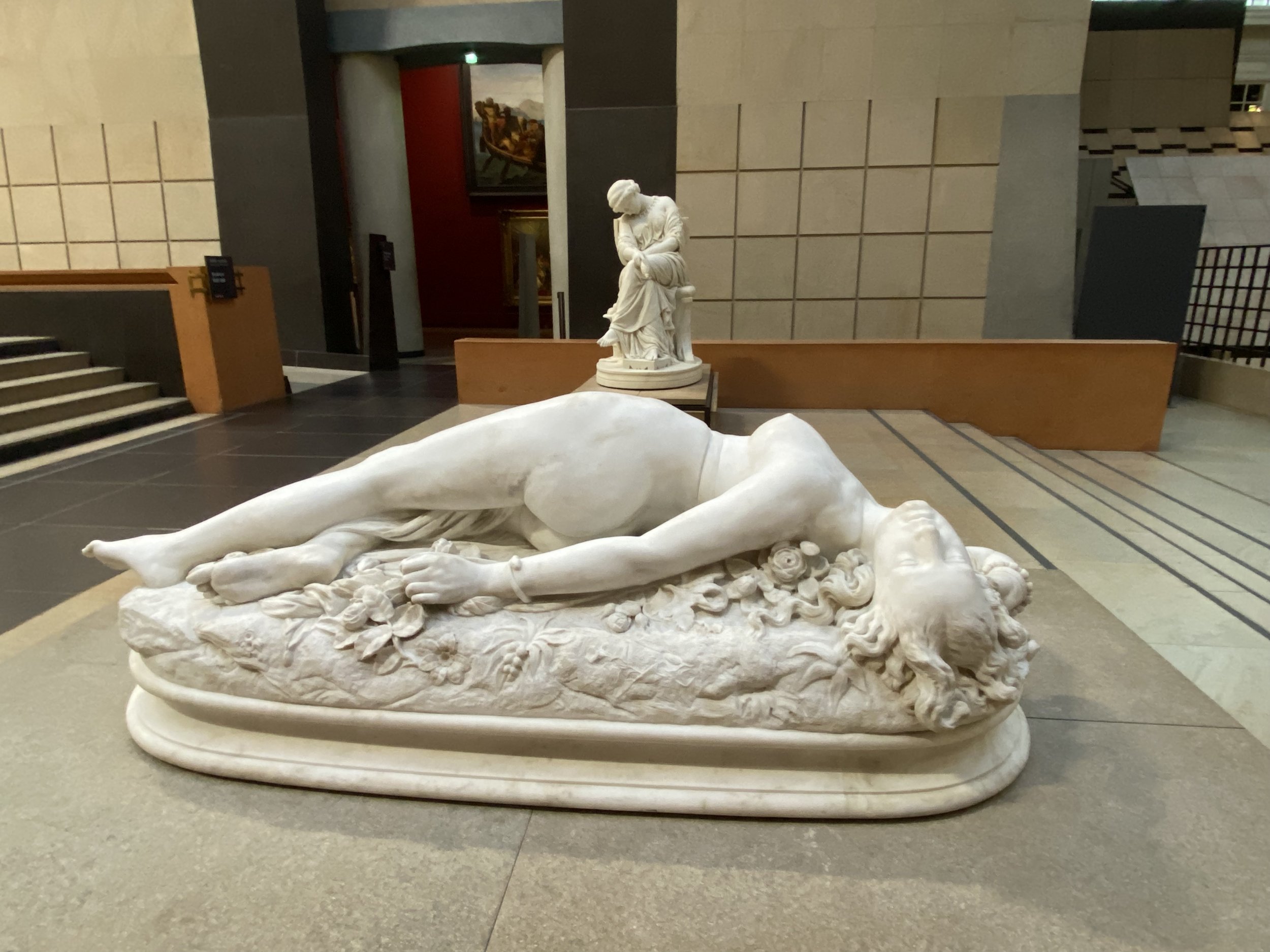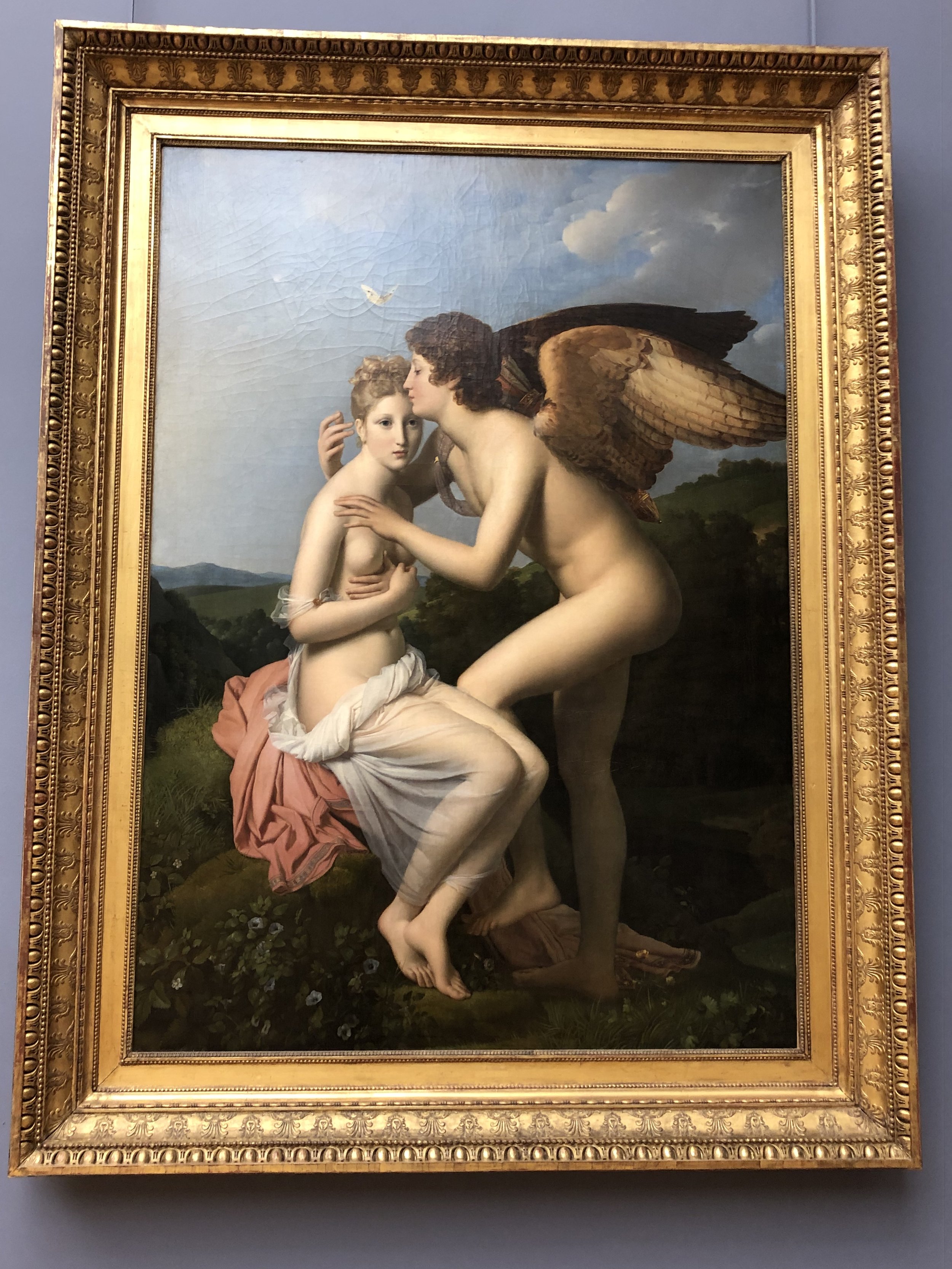Place Marcel Aymé Out of a stone wall climbs a man, his upper body, right arm, left hand, and right leg appear to be trapped within the wall. From the pages of Marcel Aymé’s book Le Passe-Muraille, The Man Who Walked Through Walls, the statue was created by celebrated French actor Jean Marais. Marais stared as the beast in the French fairy tale directed by Jean Cocteau, La Belle et la Bête in 1946, long before Disney would get their hands on it. In 1943, Marcel Aymé wrote the short story featuring Monsieur Dutilleul working for the Ministry of Registration who discovered he could pass through walls. Frightened by his new ability he visited a doctor who gave him two pills. The first to take immediately and the second within a year. Using his new ability for revenge on his boss and then a burglar where he easily evades the police.
One day he sees a woman on the nearby Rue Lepic and falls in love with her even though she is married. Sneaking into her house through the walls night after night avoiding her husband until the day he has a splitting headache and reaches for an aspirin. However, the pill he would take would be the 2nd from his doctor and not an aspirin. After leaving his lover one night and passing through the wall, he would become stuck and remain in the wall for eternity. Installed on 25 February 1989, the bronze statue by Jean Marais sits at the end of the Place Marcel Aymé, just below where the author once lived. The bronze left hand of the statue is shiny from the many people that reach up to pull him out of the wall, give it a try.
Square Suzanne Buisson Suzanne was born September 19, 1883, in Paris, and in 1940 she joined the Liberation and ran messages and people between the occupied and free zones of France. Arrested on April 1, 1944, she was sent to Auschwitz and killed on July 1, 1944. The park was renamed for this hero in 1951.
Within the park, there is a statue of Saint Denis that marks the spot where the 3rd-century saint stopped to rinse off his head before he continued onto the town of Saint-Denis and finally fell to his death.
Chateau des Brouillards, built-in 1772 for Legrand-Ducamjean and included a windmill and farm as well as two houses. The property was sold on the eve of the Revolution in what might have been the best timing ever. In 1850 the property became the home of Kees Van Dongen and Modigliani and later in 1889 Renoir and his family. The property was partially destroyed in 1929 leaving the one main building we see today down the small shaded path sitting just behind the international superstar.
The Place Dalida was renamed in 1997 when a bust of the star was installed marking the tenth anniversary of her death. Artist Alain Aslan created the bronze bust that is often rubbed for good luck and also created the amazing statue on her tomb in the Montmartre cemetery. Check out the episode of Paris History Avec a Hemingway for more on the life of Dalida.
The street leading away from the Place Dalida, Rue Girardon is named after Francois Girardon who was a sculptor under Louis XIV who first worked for Nicolas Fouquet on Vaux le Vicomte. Girardon created the tomb of Cardinal Richelieu in the chapel of the Sorbonne and a statue of Louis XIV that once stood in the center of Place Louis Le Grand, now Place Vendome. A small version is all that remains in the Musée du Louvre. Also in the Louvre are a few of his sculptures on the ceiling of the Galerie d’Apollon and a tapestry portrait of him hangs on the wall with a bit of the tomb of Richelieu.
Maison Rose was once owned by Germaine Pichot and her husband Ramon. The one-time dancer was the love interest of Carlos Casagemas, a close friend of Picasso. Carlos fell in love with her but the feeling wasn’t mutual. On February 17, 1901, Carlos walked into the Hippodrome Cafe in Pigalle where he was holding a dinner party, and attempted to shoot Germaine before he turned the gun on himself. This tragic event sparked Picasso’s prolific blue period where Carlos was the subject of many of the pieces.
Rue Cortot, named for the French Neo-Classical artist Jean-Pierre Cortot. Many of his sculptures can be found in the Musée du Louvre as well as the Louis XIII statue in the center of Place des Vosges.
One of the loveliest small museums in Paris is the Musée de Montmartre on the Rue Cortot. The 16th-century buildings are a few of the oldest on the hill of Montmartre and were once the homes of a few of the greatest French artists. The Hotel Demarne was once the home of Claude de la Rose, a great actor in the time of Moliere. Pere Tanguy, the wonderful and kind paint crusher lived here for a short time and supplied all the artists with their precious pigments.
The Museum is made up of a few separate buildings, In the Hotel Bel Air, holds even more fantastic French history. It was here that Renoir set up his studio. In the lovely Jardin Renoir, you will find a few recognizable views including the tree swing that he painted in 1876. Jeanne Samary, his frequent model, stands on the swing that is still in the same spot today and is marked with a plaque.
Make sure you go inside the museum and up to the former studios of Suzanne Valadon. You step right into the life of the model-turned artist that also had a fascinating life of ups and downs. She was the very first podcast episode we did and worth a listen if you want to know more about her.
The Musée de Montmartre is open daily in the summer 10 am-7 pm (this normally changes in the fall and winter)
Just outside the door at no 6 lived Erik Satie. The composer who wrote one of the most beautiful pieces in the world Gymnopédie no 1. Satie and Valdon were lovers from 1890 to 1898 and you can say he was obsessed with her. She decided to move on to one of his close friends Paul Mousis who she married but later left for her son's best friend. Quite the small circle there Suzanne.
At the top of the street, the Chateau d’Eau Montmartre crowns the back side of the hill inside the Square Claude Charpentier. Architect Charpentier was born in 1909 and dedicated his time to restoring and protecting historic structures in the Marais, Montmartre, and around the Sorbonne.
Join us next week when taking you to the lower side of Montmartre and a bit of the Moulin Rouge,
